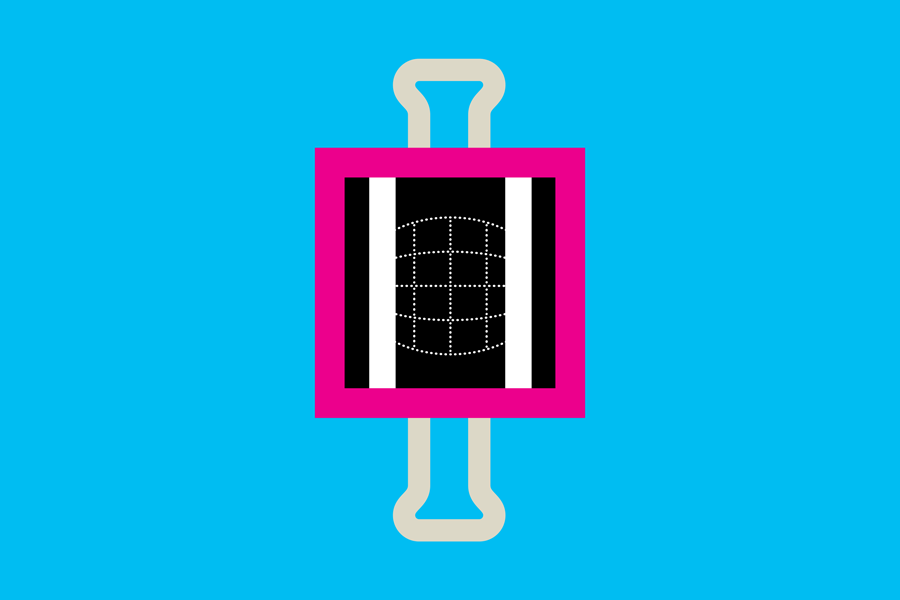Related Content

The Blood Detective
While in high school in Nigeria, Olatoyosi Odenike would watch her mother work as a medical laboratory technologist in a hematology lab. That got Odenike thinking about blood cancers. “It sounds a little morbid, but I was one of those nerdy kids,” says Odenike, director of the leukemia program at UChicago Medicine.

Philadelphia chromosome-negative myeloproliferative neoplasms, a rare type of cancer that causes the overproduction of blood cells or platelets, can become an aggressive, acute form of myeloid leukemia. “We don’t have very good treatments for those cancers when they turn that deadly,” Odenike says. With chemotherapy alone, life expectancy is less than six months, and few patients are considered candidates for a potentially curative bone marrow transplant.
In search of a better treatment, Odenike took bone marrow biopsies and blood samples from her patients, and she noticed that some showed mutations in the IDH2 enzymes, which regulate metabolism in cells. Odenike reviewed outcomes in a small group of patients treated with enasidenib, a drug that inhibits those enzymes. “Some patients were able to live for years on these inhibitors, and that’s pretty remarkable just by taking a pill,” she says. Odenike is now working on a clinical trial that pairs IDH enzyme inhibitors with inhibitors of JAK2, a protein that is key to blood cell production and associated with cancer proliferation.

The Stronger Hormone Suppressor
After Maha H. Hussain left Iraq, she eventually landed a job as an oncologist at Allen Park Veterans Administration Hospital in Detroit. She was struck by the number of patients there with prostate cancer that had spread. “It was very clear this impacted a significant percentage of men,” says Hussain, now the deputy director of the Robert H. Lurie Comprehensive Cancer Center of Northwestern University. “And there wasn’t a lot of treatment available for them.”

Men with metastatic hormone-sensitive prostate cancer are given chemotherapy and injections to suppress testosterone. Hussain thought more could be done. As part of the steering committee of an international clinical trial of over 1,300 patients, she looked at whether the new antihormone pill darolutamide could, if used in conjunction with the injections but without the chemo, increase longevity while lessening side effects.
In a coauthored study published in the New England Journal of Medicine, Hussain reported that 65 percent of the patients receiving darolutamide were still alive by the four-year mark, compared with only half in the placebo group. “The pills prevent the cancer cells from having access to any circulating male hormone in the body,” Hussain says. “You’re starving the cancer from the hormones that can feed it.”

The Skin Cancer Trojan Horse
Surgery isn’t always an option for skin cancer, especially when a tumor is attached to a blood vessel, nerve, or lymph node. Sigrun Hallmeyer, Advocate Aurora Health’s codirector of medical research, is helping pilot clinical trials to study how cancer-destroying oncolytic viruses can be used to treat such patients. “These viruses are highly engineered to have two properties,” says Hallmeyer. “They’re affecting only cancer cells, and they’re deadly to those cells once the cell is infected.”

Because melanoma cells come from a patient’s own tissue, the immune system must be trained to recognize them as foreign. The tumor is injected with oncolytic coxsackievirus A21, which selectively replicates in the cancer cells without harming normal cells, then alerts a patient’s immune system that the cancer cells need to be destroyed. “It’s a Trojan horse situation where we’re infecting the melanoma cells with a virus that will interfere with how the DNA in the virus is replicating,” Hallmeyer says. Once the immune system recognizes the cancerous cells, the patient’s lymphocytes seek and destroy melanoma throughout the body, even in spots not injected with the coxsackievirus.
In the trials, some patients with previously inoperable melanoma had their tumors shrink enough that they could be removed surgically. The treatment alone cured some patients’ melanoma, eliminating the need for chemotherapy, surgery, or radiation.

The Better Bone Cutter
When cancer starts in the bones, it’s usually in the “long bones” — the humerus in the arms and the tibia and femur in the legs. Previously, removing it surgically often damaged the body. “It was imprecise,” says Steven Gitelis, director of orthopedic oncology at Rush University Medical Center and chief medical officer at Onkos Surgical, an orthopedic manufacturer focused on oncology. “You took out a lot of normal tissue to get the cancer out, which led to a loss of function.”

Gitelis came up with a better way. He constructs a 3D-printed plastic model of the bone from digital images, usually a CT scan, to see the precise location of the cancer. He also creates 3D-printed cutting guides to saw through the bone and remove the targeted section with more exactness. He then inserts donor bone tissue for reconstruction.
“It matters how tight, how precise, the fit is up against the patient’s bone,” says Gitelis, whose procedure got FDA approval in 2019. “In the old days, there were big gaps and a high nonunion rate, where the bones didn’t unite. With the 3D-printed cutting guides, you get a perfect fit. That’s what leads to quicker healing, like with a fracture.” Patients who don’t need chemo can heal within three to six months. “The better the carpentry,” Gitelis says, “the greater the success rate, the quicker the healing.”

The Brain Tumor Dual Attack

Among cancers, brain tumors are the top killer of children. That has motivated Angela J. Waanders, director of precision medicine oncology at Ann & Robert H. Lurie Children’s Hospital of Chicago, to study treatment of pediatric low-grade gliomas, a common type that starts in glial cells, which play a pivotal role in brain function and development. Depending on where the tumor is located, it can cause seizures, learning disabilities, blindness, obesity, and even death as it grows. “It really impacts the overall growth and development of a child,” Waanders says. One of her patients, an 8-year-old, has been receiving chemotherapy or other treatments since that child was an infant. “The tumor now takes up one-fifth of the space inside of their skull.”
Waanders spent a decade researching the genetic and molecular framework of these tumors in mice to figure out how to slow their growth. She identified a combination of drugs — everolimus and trametinib, which inhibit proteins altered by cancer — that wasn’t effective in adults but she thinks will work in children, whose tumors have fewer mutations. Now she’s coleading a dual-drug trial, through the Pacific Pediatric Neuro-Oncology Consortium, on children whose cancer didn’t respond to single-drug treatments or chemotherapy. Though the trial isn’t expected to wrap up until next March, preliminary results are encouraging. “What we saw in the lab is what we are seeing in patients,” says Waanders. “By combining treatments, it’s more effective.”




